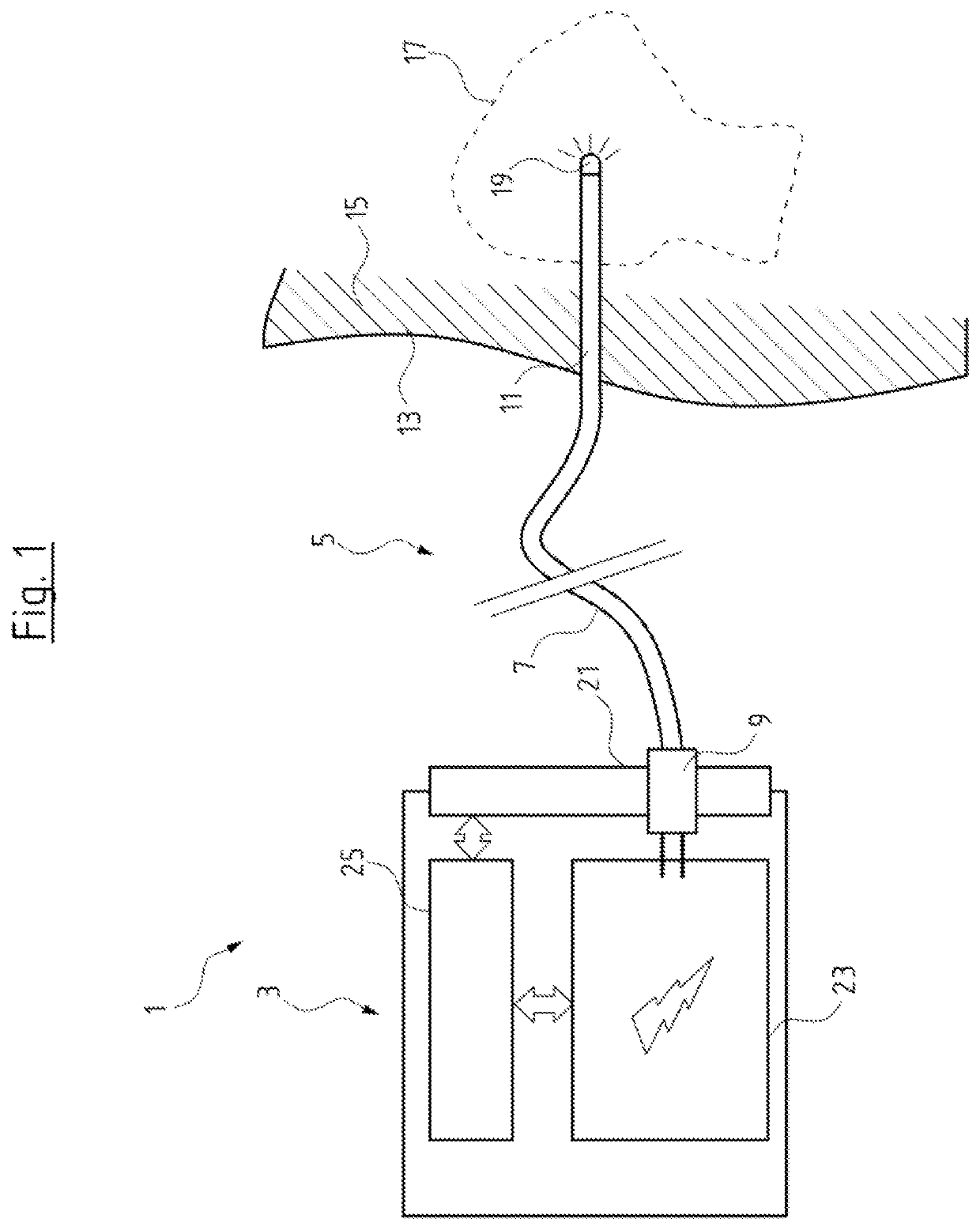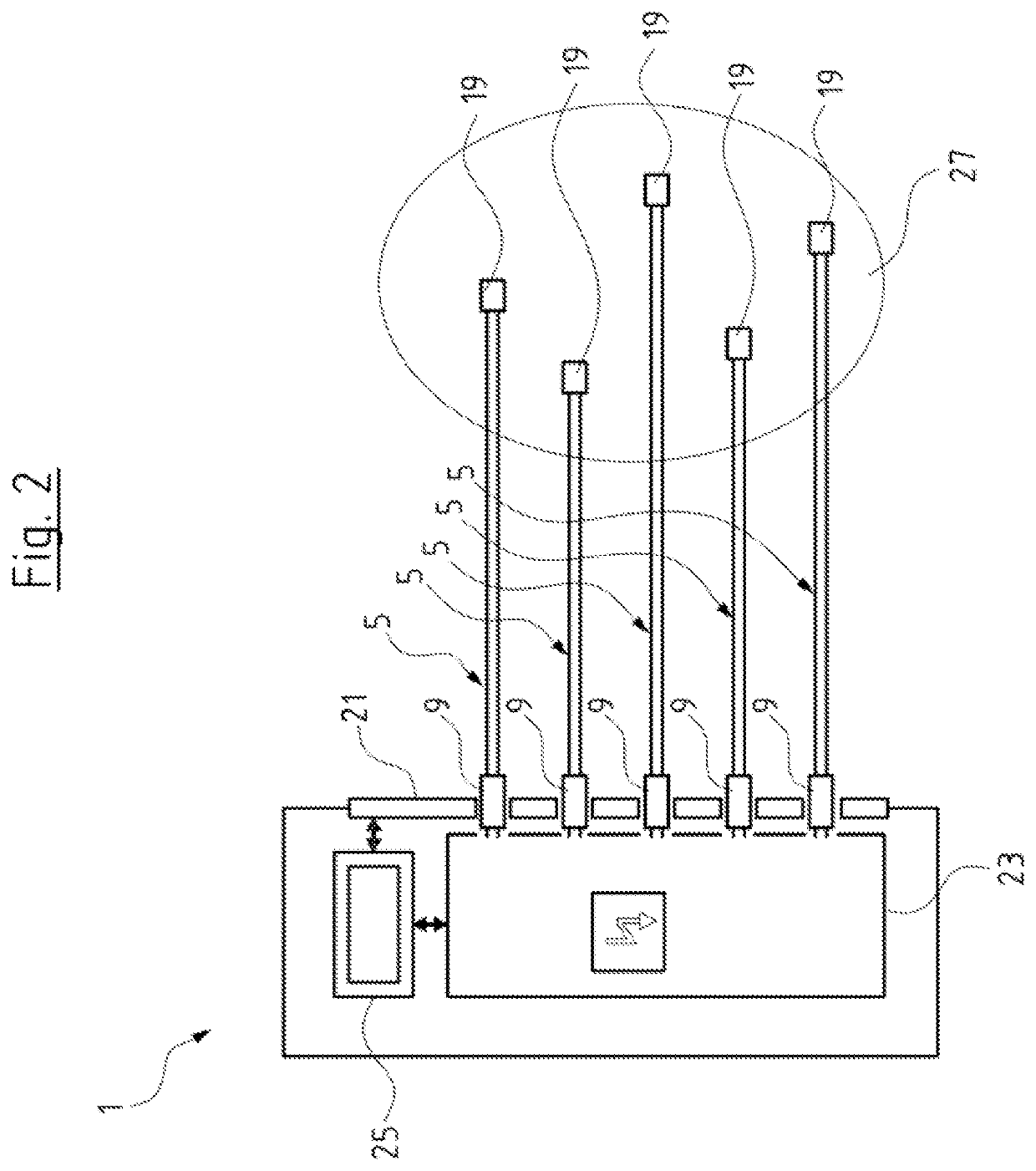Light applicator
- Summary
- Abstract
- Description
- Claims
- Application Information
AI Technical Summary
Benefits of technology
Problems solved by technology
Method used
Image
Examples
Embodiment Construction
[0071]FIG. 1 shows a light applicator system 1 with a light applicator operation unit 3 and an exchangeable light applicator 5. The light applicator 5 consists essentially of a flexible cable section 7 which extends from a proximal-side plug 9 to a distal-side insertion section 11. The insertion section 11 in contrast to the cable section 7 is the section of the light applicator 5 which is envisaged to be pierced into organic tissue of a body 13. The light applicator 5 here is suitable for percutaneous PDT and is shown in PDT operation. The insertion section 11 here is configured as a rigid needle section which for example assisted by CD or ultrasound from the outside and with the distal tip is pierced through the skin 13 of a patient and underlying healthy tissue 15 into pathological body tissue 17, e.g. a malignant tumour.
[0072]At the distal tip, the insertion or needle section 11 comprises a distal-side LED 19 for in-situ generation of excitation light for the PDT. If for example...
PUM
 Login to View More
Login to View More Abstract
Description
Claims
Application Information
 Login to View More
Login to View More - R&D
- Intellectual Property
- Life Sciences
- Materials
- Tech Scout
- Unparalleled Data Quality
- Higher Quality Content
- 60% Fewer Hallucinations
Browse by: Latest US Patents, China's latest patents, Technical Efficacy Thesaurus, Application Domain, Technology Topic, Popular Technical Reports.
© 2025 PatSnap. All rights reserved.Legal|Privacy policy|Modern Slavery Act Transparency Statement|Sitemap|About US| Contact US: help@patsnap.com



